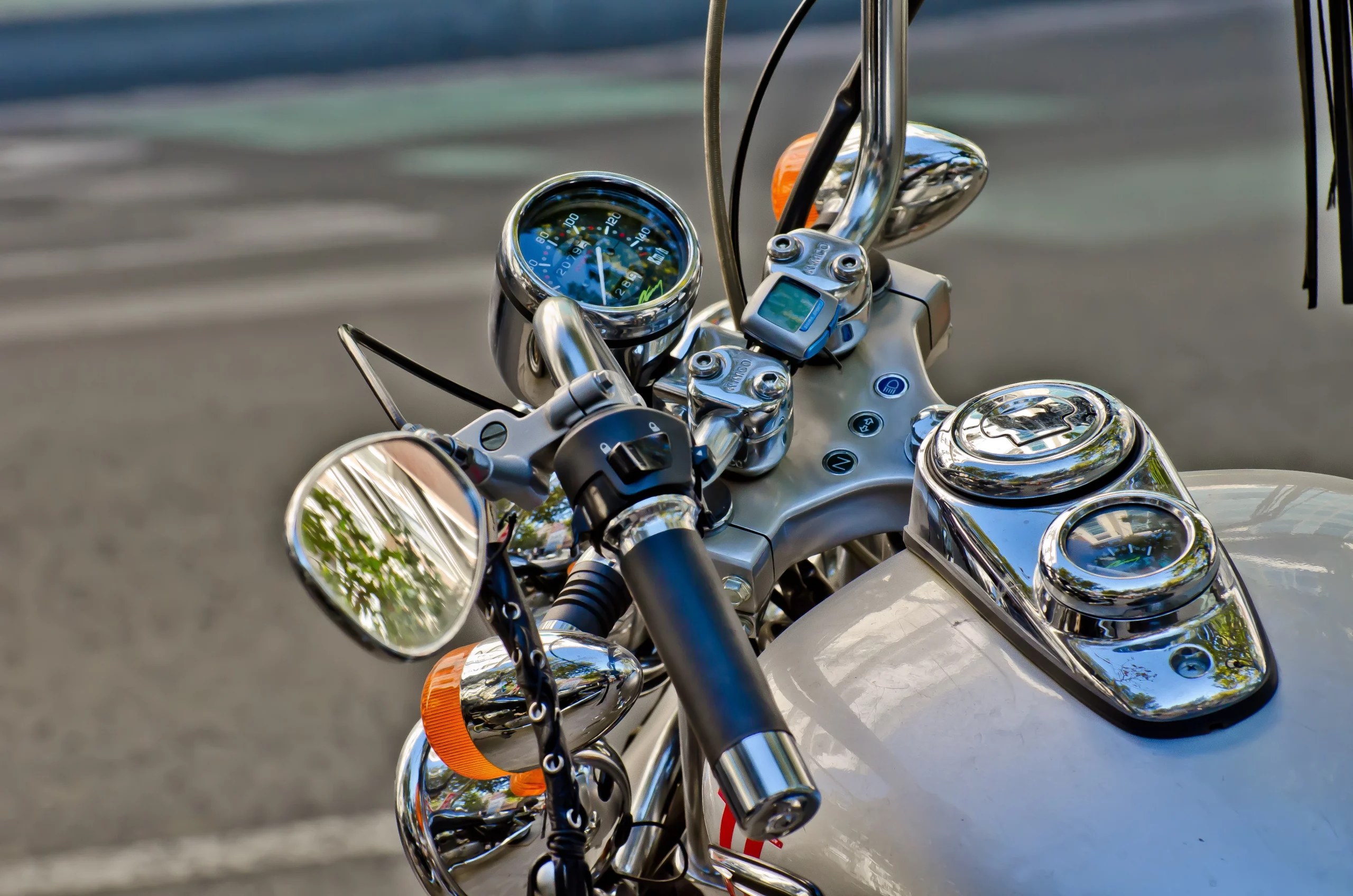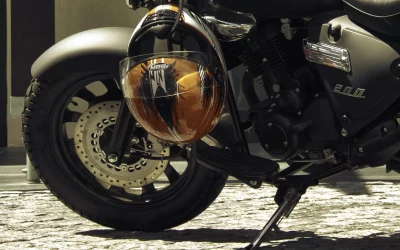Trauma to the Chest Caused by a Motorcycle Accident
Motorcycle crashes are typically violent events that claim the lives of hundreds of riders each year and injure the survivors severely. Those who survive motorcycle accidents will often face a variety of injuries that will have a detrimental impact on their life.
Motorcycle crashes are notorious for causing chest trauma, which may result in various injuries and resulting damages such as medical costs, lost earnings, and pain and suffering.
Free Consultation
In Person | Phone | Zoom
Claims for Motorcycle Accidents and Chest Injuries
Motorcyclists are quite vulnerable on the road. There are no airbags, much less a barrier formed by the chassis of a car that can absorb the shock of a collision with another car or a static object. As a result, severe injuries are the norm in many of these sorts of accidents, necessitating the filing of a claim against the entity responsible for the disaster.
Minor injuries are often covered by a person’s injury protection (PIP), which Colorado law mandates to be exhausted first regardless of who is at blame in the event.
How to File a Claim for a Motorcycle Accident
If you have been wounded in a motorcycle accident caused by another party and have to pay medical expenses, have lost out on much-needed earnings, or are suffering from severe psychological trauma due to the accident, you do have legal remedies to seek compensation for these losses.
A motorcycle accident injury claim may be filed against the negligent parties who caused your injury, perhaps resulting in compensation that would assist you in regaining your footing.
To submit a claim, you must have had a serious injury that exceeds the limits of your coverage, be able to demonstrate that the damage was caused by your motorcycle accident, and establish that the defendant party is accountable for your injury.
The procedure of submitting a motorcycle injury claim is intricate and sophisticated, necessitating the aid of an experienced legal practitioner. Consider communicating with an experienced motorcycle accident attorney who can assist you in notifying the insurance company, building your case, negotiating a settlement, or litigating your case if necessary.
What Causes Motorcycle Chest Injuries?
Due to the rider’s exposure and their distinct location on a motorcycle, somebody portions are more prone to harm than others in an car collision. Collisions with another car have a significant probability of causing torso injuries.
This is due to the direct impact and the secondary vectors of trauma induced by a collision. Motorcyclists are often thrown off their motorcycles when they are struck by a car.
They may then suffer catastrophic injuries due to their body colliding with another item, the ground, or another car. Additionally, a motorcycle may fall upon a biker, crushing him or her. Despite being far lighter than cars and other motor cars, motorcycles nonetheless have enough weight to harm someone badly if they fall on them.
What Does the Term “Blurred Impact” Mean?
Any form of motorcycle accident might result in a blunt impact injury. These terms allude to blunt force trauma or blunt trauma, which occurs when a portion of the body comes into direct touch with an injury-causing instrument.
Typically, blunt force injuries do not enter the body. Because the impact of a motorcycle collision often happens from the waist up, blunt force injuries to the head and/or body are a prevalent kind of injury in motorcycle accidents.
The medical community classifies blunt impact injuries into the following categories:
Contusions
Abrasions
Lacerations
Fractures
Head and Torso Blunt Impact Injuries
Abrasions and lacerations to the scalp, skull fractures, brain contusions, and other serious traumatic brain injuries are all examples of blunt force trauma to the head (TBI). Traffic collisions, including motorcycle accidents, are the second largest cause of mortality among those under the age of 25.
Not only can blunt impact head traumas cause brain contusions, but they may also cause concussions and diffuse axonal damage.
However, brain contusions are common, with about one-third of all TBI patients suffering from a cerebral contusion. They arise as a result of blood pooling on the brain. Concussions occur due to the impact’s fast jolt, which causes the brain to bounce about within the skull. When a twisting action destroys and strains neurons in the brain, the same impact might result in widespread axonal damage.
When a rider’s thorax, medically referred to as the spine’s thoracic area, is struck by blunt force during a motorcycle collision, the rider’s chest and abdomen are damaged. Internal contusions and lacerations caused by blunt impact injuries to the torso might result in organ damage and failure. Occasionally, blunt force results in shattered ribs, which may result in internal bleeding and injury.
Motorcycle riders who sustain blunt torso trauma are also at risk for serious chest wall, pulmonary, and cardiovascular damage.
Chest wall injuries include broken ribs, the most frequent severe chest injury, shattered breastbone, and flail chest, which occurs when many broken ribs destabilize the chest wall.
Pulmonary injuries include pulmonary contusions, which are damaged lung tissue, and traumatic asphyxia, which occurs when the heart’s blood flow is reversed due to a collision. A hemothorax or pneumothorax, both of which may result in the collapse of one or both lungs, may also develop due to blunt torso impact. Pneumothorax is the accumulation of air in the space between the lungs and the chest wall, while hemothorax accumulates blood in the same cavity.
Cardiovascular injuries caused by blunt torso impact include pooling of blood within the membrane surrounding your heart, referred to as pericardial tamponade, which forces the heart into additional compression, heart contusions, heart concussion, heart rapture, and other blunt cardiac trauma. To the torso, hard impact injuries may also rupture the inner layers of an artery,
referred to as a blunt aortic injury. Motorcycle accident patients who sustain blunt aortic damage have a 10% probability of survival after the event.
Complications of Blunt Impact Head and Torso Injuries
For motorcycle accident victims, blunt force trauma injuries such as those outlined above may result in various long-term consequences. Around one in every four patients who sustain concussions must deal with headaches, vertigo, loss of concentration, depression, and other significant long-term consequences such as impairments in motor function, cognition, speech, and language. Head trauma caused by blunt force may also affect the senses, including vision and hearing.
As previously stated, cracked ribs are one of the most prevalent complications of severe impact injury torso. Fractured ribs are risky because they may result in internal bleeding, organ damage, and other internal complications.
Internal injuries, particularly those that go untreated, have a substantially greater risk of death. Additionally, irreversible lung or heart damage may need several operations, leaving patients with lifelong issues that require continuing therapy, sometimes to stay alive.
Treating Head and Torso Blunt Impact Injuries
Motorcycle riders who sustain blunt force trauma to the head and/or body due to a motorcycle collision should seek emergency medical attention. Head trauma may result in irreversible brain damage. The longer someone goes without treatment for a brain injury, the greater the potential of further damage. Healing and rehabilitation will be unique for each head trauma patient, depending on the location and degree of the damage.
Patients may require the following therapies during their rehabilitation: • Physical therapy to regain lost muscle function and range of motion following injuries • Occupational therapy to learn new ways to perform routine tasks following a permanent injury • Speech and language therapy to rehabilitate lost motor and cognitive functions related to communication • Behavioral therapy to cope with the psychological impact of suffering severe motorcycle accident injuries.
Chest and abdominal blunt impact injuries are often fatal. The immediate emphasis of treatment is on life-saving measures, which often involve surgery, chest physiotherapy, and respiratory care.
When treating chest injuries, surgeons take extra care to immobilize the ribs in the event of rib fractures. Not only are fractured ribs painful, but they may also cause severe damage to organs and even internal hemorrhaging if left untreated.
Motorcycle Chest Injuries That Are Common
Chest injuries are among the most heinous that a person may get in a motorcycle accident. Many of your body’s vital organs are located in your torso, and injury to them may render someone disabled or perilously near to death. Motorcycle accidents often result in the following chest injuries:
Ribs Broken – Broken bones are typical in all types of motor car collisions, not just motorcycle collisions. However, fractured ribs are a typical occurrence among bicyclists and may result in catastrophic injuries. Breaking a bone may not seem to be a significant event. However, shattering a rib might jeopardize the organs it surrounds. Broken ribs may burst or lacerate adjacent organs, posing serious consequences.
Injuries to the Lungs
Your lungs are the primary component of your respiratory system and may sustain serious injury in a motorcycle accident. They are placed on each side of the chest and take up
a good deal of area, making them more susceptible to harm. They may be crushed or pierced by severe trauma or fractured ribs, resulting in internal bleeding, collapse, and respiratory failure.
Aorta Damage
The aorta is the body’s largest blood artery and serves as the backbone of the circulatory system. Motorcycle accidents may cause this artery to tear, rupture, or even explode, resulting in internal bleeding.
Injuries to the head
This is the most vulnerable portion of the body to harm; thus, it’s unsurprising that head injuries are also the primary cause of motorcycle accident deaths. Along with the physical harm caused by the contact, road rash and whiplash risk the rider. Helmets are important for avoiding any of these calamities. Not only may it assist in reducing the risk of high-impact head trauma, but it can also aid in avoiding face injuries.
Injuries to the Chest
Chest injuries are the second biggest cause of mortality among motorcycle riders. This kind of injury often occurs when the rider is trapped by the motorcycle, struck by another car, driven into the handlebars, or thrown from the bike and collides with a huge stationary object. Motorcycle riders may protect their chests by wearing jackets with reinforced panels designed to absorb impact energy. Wearing this simple device may go a long way toward preventing significant harm to the heart, lungs, and other vital organs.
Injuries to the Leg
Leg fractures are another common motorcycle accident injury. In the event of an accident, a rider might quickly get trapped under the motorcycle’s weight. This strongly crushes the rider’s legs and might result in the thigh and lower leg bone fractures.
Leg injuries sometimes occur when a rider extends his or her feet outward after a collision with a stationary object to balance an unbalanced motorcycle. Severe bleeding may occur if the motorcycle rider’s femur fractures since the main artery flowing up the upper leg may be affected. This very frequent injury has the potential to be fatal.
Injuries Caused by Sliding
When a rider is thrown off a motorcycle, they risk developing road rash, which develops when the rider’s body scrapes against the pavement. When gloves are not worn, a person’s hands are particularly vulnerable.
De-gloving is the process by which the tissues and skin of a person’s hands are peeled away. This painful ailment may need skin grafts and numerous procedures to treat. If road rash occurs on the hands or other regions of the body, significant infections and problems might arise.
Burns
When motorcyclists are involved in a collision, they often encounter the motorcycle’s exhaust pipe or even the exhaust of another car. This may result in life-threatening burn damage. Simply wearing synthetic protective garments or leathers may help avoid burns caused by prolonged exhaust contact.
To assist prevent any or all of these injuries, visit a local motorcycle accessories store to find the most appropriate personal protective equipment for you. Utilizing such equipment regularly when riding a motorcycle may go a long way toward reducing injuries in the case of an accident.
Seek the Assistance of a Skilled Colorado Motorcycle Accident Attorney
Allow the experienced attorneys at Warrior Motorcycle Accident Attorneys, to conduct a free assessment of your case. While no two cases are identical, you may be entitled to compensation for medical expenses, missed earnings, and physical and emotional pain and suffering.
As a Colorado driver with a motorcycle endorsement, you have the right to ride a motorcycle on Colorado’s highways, streets, and roads. Even if you’re visiting Colorado on vacation as part of a motorcycle journey, you have the same right to the road as other drivers.
If you’ve been injured in a left hook motorcycle accident that wasn’t your fault, call 719-300-1100 or contact us online to arrange a free case review. We never lose sight of our objective—serving the best interests of our clients.
Our attorneys are sympathetic experts who can assist clients in navigating a difficult period in their life. Do not accept low-ball settlement offers from insurance companies—inquire immediately about how the Colorado personal injury attorneys at Warrior Motorcycle Accident Attorneys, may assist you.







